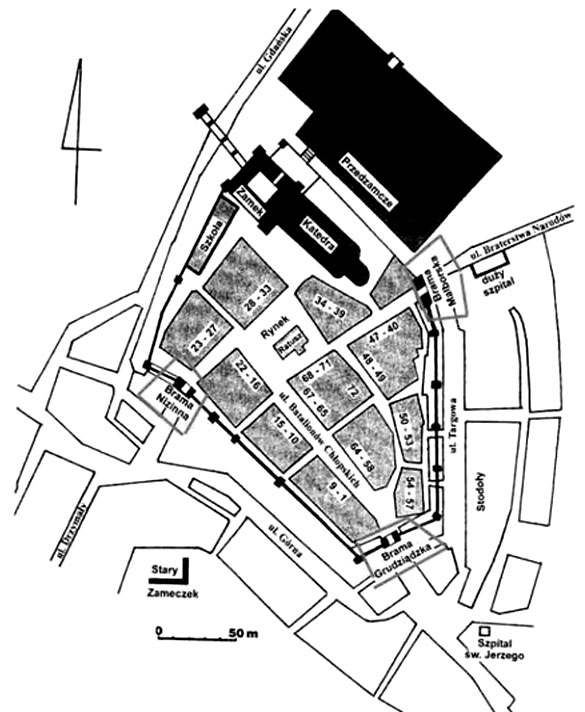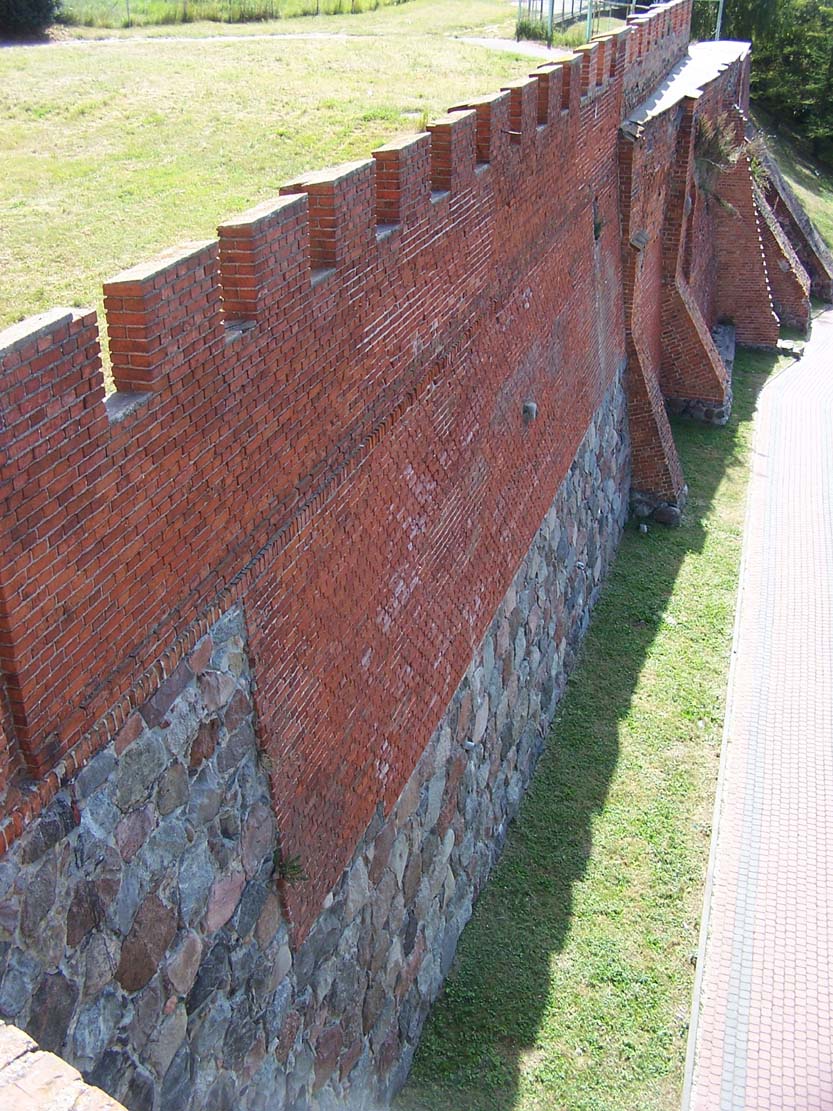History
The first fortifications in Kwidzyn (Marienwerder) were erected around 1233 by Teutonic Knights under the command of the Land Master Herman Balk. These fortifications, probably in the form of a wood and earth watchtower, were destroyed in the years 1242-1243, during the first Prussian uprising against the Teutonic rule. The town was probably abandoned for a long time then, and new settlers did not appear until 1255. During the second Prussian uprising in 1260-1273, the town, already owned by the Pomesanian bishops, was once again burned down and devastated. After this incident, at the end of the 13th century, a decision was made to build stone and brick town defensive walls. Around 1336, the main construction works on them were already completed.
The division of Prussia by Pope Innocent IV in 1243 meant that the Teutonic Order was obliged to give one third of the territory of each diocese to the salary of bishops. Kwidzyn was chosen the capital of the Pomesanian bishopric, therefore, it was decided to build the bishop’s castle and the cathedral. The latter, not without resistance from the townspeople, was built in the area of the town in the 14th century and was connected with the castle of the Pomesanian chapter, which was built from the turn of the 13th and 14th centuries.
During the 15th and 16th centuries, Kwidzyn was destroyed several times. Pursuant to the provisions of the Second Peace of Toruń from 1466, the town and the castle were granted to the Teutonic Knights, however, the Pomesanian bishopric was given to the Polish bishop of Chełmno, Wincent Kiełbasa. After his death, the Order attempted to seize the Pomesanian bishopric with the support of the cathedral chapter. This led to the intervention of Polish troops known as the Priest War, during which in 1478 Polish army captured Kwidzyn. The town and the castle were conquered again in 1520, as a result of military actions.
In the 18th century, the medieval town walls, like in most other urban centers, became completely obsolete due to the rapid development of the art of war. Dilapidated and neglected, they began to be gradually dismantled and absorbed by the urban buildings, so that by the end of the 19th century they were almost completely annihilated.
Architecture
Kwidzyn was situated on the eastern bank of the Vistula River, on the edge of a wide valley. Its area sloped slightly from the east to the west and from the north to the south, while on the south side a deep ravine with the stream separated the town from a slightly higher hill, where on the promontory was originally the castle of Pomesanian bishops. From the west, Kwidzyn was limited by quite steep slopes descending towards a small river called Liwa, and in the north, the town was adjacent to the castle complex of the Pomesanian chapter and the cathedral, which separated the urban buildings from the lower outer bailey and the range of hills extending further north. The favorable for defensive reasons terrain, meant that the creation of a moat was necessary only from the eastern side.
In the fourteenth century, a defensive wall in the shape of a irregular pentagonal, surrounded the town of an area of about 10 hectares. The circuit was elongated on the line north-west and south-east, with the shortest section on the south-east. On the north side, the wall was connected with the chapter castle and with the wall surrounding the cathedral. It is not known whether both of these buildings were separated from the town by a ditch or an additional section of the wall. The curtains of the town wall were reinforced by several or a dozen four-sided towers. Initially, the walls were topped with a wall-walk with battlement, later perhaps replaced by a simple breastwork with arrowslits.
Three gates led to the town. The most impressive was the north-eastern Malbork Gate, located near the cathedral and the outer bailey. Its passage was flanked by two towers, and the access led through a drawbridge over an irrigated moat. Another gate, erected in the south-eastern part of the town, was the Grudziądz Gate, also known as the High, Upper, or Chełmno Gate. It was located in the shortest section of the circuit and directed to the area of Grudziądz Suburb with the hospital of St. George. The third of the town gates, called Low Gate, Water or Gniew Gate, led out of the town to the Kwidzyn Lowlands on the west side, through the oldest suburb redorded in documents as Podolice from 1336.
Current state
The short fragment of the town defensive wall, south-west of the castle, has been preserved to the present day. None of the town towers or gates have survived.
bibliography:
Die Bau- und Kunstdenkmäler der Provinz Westpreußen, der Kreis Marienwerder, östlich der Weichsel, red. J.Heise, Danzig 1898.
Garniec M., Garniec-Jackiewicz M., Zamki państwa krzyżackiego w dawnych Prusach, Olsztyn 2006.
Leksykon zamków w Polsce, red. L.Kajzer, Warszawa 2003.



